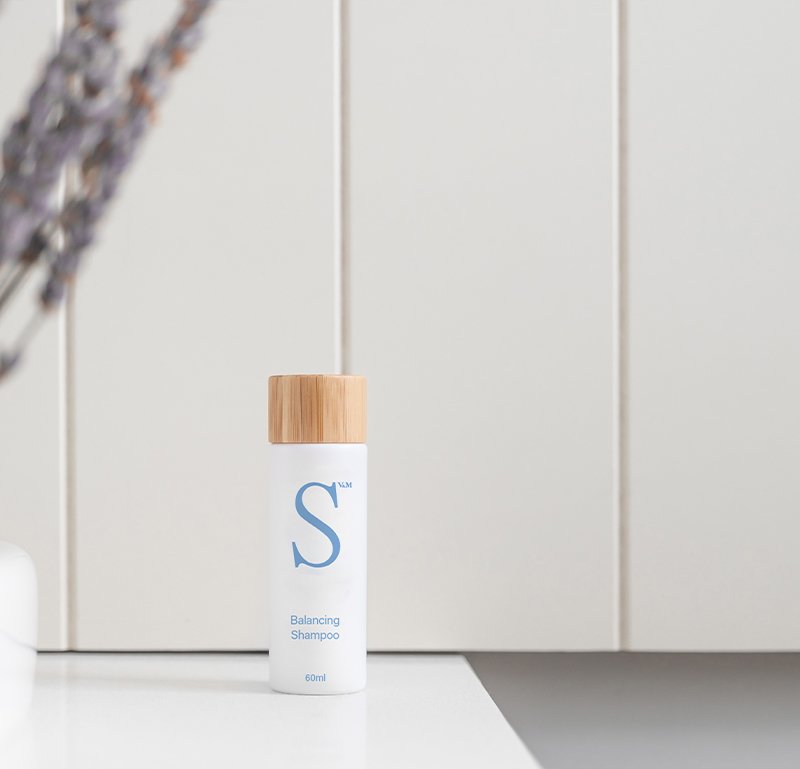Repair Your Damaged Hair With the Best Hair Treatment for Damaged Hair in Australia
Are you tired of dealing with dry, damaged hair that can't seem to grow? Perhaps you used to have long, luscious locks, but now your hair appears dull and lifeless. You're not alone. There are steps you can take to transform your hair at home. Start by discovering the best hair treatment for damaged hair in Australia paired with the best shampoo and conditioner to repair and revive your hair. With a little care and attention, you can reclaim your luscious locks and feel confident in your hair again.
What Does Damaged Hair Look Like?
Dry: One of the most common signs of damaged hair is dryness. Damaged hair is often dry to the touch and may look dull and lifeless.
The link between damaged hair and split ends: Another common characteristic of damaged hair is split ends. Split ends occur when the protective outer layer of your hair (the cuticle) becomes damaged and begins to fray. Is damaged hair frizzy? Not always, but yes, often. Split ends can make hair look frizzy and unkempt.
Broken Hair: Damaged hair is more prone to breakage than healthy hair. Broken hair can happen when your hair becomes weak and brittle due to damage from heat, chemicals, or other factors.
Tangled Hair: Damaged hair may also be more prone to tangling and knotting, which can happen when your hair cuticle becomes damaged, causing your hair strands to stick together and form knots.
Hair that lacks bounce: Healthy hair can stretch and bounce back into shape without breaking. However, damaged hair may lack elasticity and may break when stretched, such as being manipulated during styling.
Faded colour: Hair that is chemically treated, such as dyed or permed hair, including keratin straightening, may lose its colour more quickly when it is damaged. These chemical treatments can make your hair tone appear dull and faded.
Will Damaged Hair Grow?
Yes, but not well. Damaged hair is like a plant without enough sun or water; it lacks essential elements and nutrients to grow. A classic growth pattern of damaged hair is this: Some parts of your hair still grow, but others, especially around your face and ears, continually break off, which is frustrating as it makes it hard to tie your hair back and style it, with short, wispy, broken bits of hair framing your face.
What Damages Hair the Most?
You may look after your hair, but you still struggle with damage, which usually happens because people don't know the hidden factors that can cause significant damage.
Heat Styling Tools Can Cause Hair Damage
Do you love using hot tools like straighteners, curling irons, or blow dryers on your hair? We do too, but using them too much or incorrectly contributes to hair damage. Heat styling tools deplete your hair of its natural moisture, and if these heat tools are used incorrectly, they will make your hair feel dry and brittle. And overusing these tools will make your hair more prone to breakage and split ends.
To avoid damage caused by heat styling tools, limit your usage. If you love them and cannot live without them, use them on the lowest heat setting and apply a heat protectant spray to your hair beforehand. Additionally, you can leave your conditioner on for a few extra minutes when washing to boost the hair with extra moisture.
Chemical Treatments Can Contribute to Hair Damage
Chemical treatments like hair colouring, bleaching, and Keratin straightening can cause severe damage to your hair if an expert does not do them. These treatments can strip your hair of natural oils, leaving it dry, brittle, and prone to breakage.
To avoid damage from chemical treatments, always have these treatments performed by a qualified hairdresser specialising in the area. Additionally, you can use the best treatment for damaged hair in Australia after a chemical treatment to restore your hair's natural moisture.
Over-Washing Could be Damaging Your Hair
Do you wash your hair every day? While washing your hair regularly is essential, over-washing can strip it of natural oils, leading to dry and brittle hair, making it more prone to breakage. Additionally, overwashing can cause scalp irritation and dry scalp leading to dandruff.
To avoid damage caused by over-washing, try to wash your hair every other day or a few times a week. Use the best shampoo for damaged hair in Australia, V&M's award-winning Hydrating Shampoo. For this regime to work, you'll need high-quality products, so look for trustworthy brands formulated with proven traceable ingredients.
V&M Spa founder Victoria's top tips for repairing your damaged hair:
"Wash your hair less, especially when it is broken or damaged, and you want to return it to good condition. Start with a gently balancing or clarifying shampoo, which may not lather on the first shampoo; this is a good thing as it is not stripping your hair with harsh surfactants; the second shampoo is where you will feel the shampoo start to foam," says Victoria.
"If you have very fine hair, use a clarifying shampoo, such as V&M Spa's Balancing Shampoo, voted the best shampoo for fine hair in Australia. I recommend all other hair types use a hydrating shampoo as the second shampoo: This is where the strands of hair will start the hydration phase, yes you heard right; shampoo not only cleans your hair but will hydrate your scalp and strands of hair too.
Each step should give time to rinse your hair thoroughly before moving on to the conditioning phase. If you don't rinse products out of your hair thoroughly, pollutants and natural oils will stick to the residue creating a feeling of 'oily hair.' If you've ever heard of the '60 second rule' for face cleansing, consider the same for rinsing. Rinse for 40–60 seconds to ensure the product is entirely out of your hair. Even if you have fine hair, follow up your shampoo with a conditioner for damaged hair."
Tight Hairstyles Can Damage Your Hair
Tight hairstyles like overly tight braids, ponytails, and buns can damage your hair. These hairstyles can pull on your hair, leading to breakage. Additionally, tight hairstyles can cause tension headaches, scalp irritation, and even traction alopecia.
To avoid damage caused by tight hairstyles, try to avoid wearing them every day, allowing your scalp and strands to have a break every other day. If you must wear a tight hairstyle, ensure it's not too tight, and use a soft hair tie that won't pull on your hair. If needing a sleek look, hairspray can be used to create a sleek look.
Hair Brushes Can Cause Daily Damage to Your Hair
Plastic brushes damage your hair, especially if you blow dry your hair with them. Instead, try a carefully crafted wooden hairbrush. Start detangling from your mid-lengths, and once your hair is free of knots, press the brush gently into your scalp to enhance blood flow. Well-crafted brushes are designed to stimulate your scalp's blood flow to improve healthy hair growth without damaging your delicate tresses.
V&M Spa and hairstylist Victoria says brushing your hair helps prevent damage: "Gently brush your hair, starting at the ends and working your way up to the roots with a natural or wooden brush. Taking time to massage your scalp with the wooden bristles will encourage blood flow to the follicles, helping to produce healthy, strong hair stands."
Best Hair Treatment for Damaged Hair in Australia
Damaged hair to healthy hair
The best news is that damaged hair can be revived back to health. All it takes is the right products, a strong haircare regime, and an understanding of how to restore your hair's health. Here are the top tips for restoring the health of your damaged hair:
Do damaged hair treatments at home work?
Yes. The best hair treatment for damaged hair in Australia is the first step to helping revive your hair. Hair treatments work by nourishing from the inside out. You don't need a specific 'treatment'; use a high-quality conditioner or 'treatment conditioner.'
V&M Spa founder Victoria says: "Start by applying one to three pumps of treatment conditioner, depending on your hair type. Rub the product into the palms of your hands before scrunching the conditioner first to the ends and mid-lengths, then working your way up to the roots. This technique applies to all hair types.
Conditioning your roots is essential for both your hair and scalp health, helping create the perfect environment for nourished hair and scalp. Use your fingers as a comb, ensuring each strand of hair is detangled, then rinse the conditioner. If you have time to give your hair some extra love, leave the conditioner on until the last step before getting out of the shower,"
Let your hair air dry where possible.
Allowing your hair to air dry overnight is always preferred to blowdrying it when wet, but this won't work for all hair types.
How do you know if you have damaged hair vs. dry hair?
If your hair is feeling dry, your hair is probably damaged. The loss of moisture disrupts the natural balance of your hair's cuticle, leading to more knots, breakage, and damage and split hair. So if your hair is feeling dry, it may already be on its way to being damaged.
What is the best solution for damaged hair?
Set aside time to nurture your hair. Sunday evening is often a great time to pamper and prepare your hair for the week. Gently brush your hair following the steps above, then follow up with the routine below:
Wash your hair with the best shampoo for damaged hair in Australia. Wash it at least twice, and don't wash it every day.
Condition your hair, even if you have very fine hair. This step is a must to nourish your scalp and repair damaged hair.
Leave the conditioner on until you are about to get out of the shower. Using a treatment conditioner is the best way to boost the health of your damaged hair.
Avoid applying too much heat to your hair to style it.
If your hair is damaged, you can restore the health of your hair with a few products and changes to your haircare routine. Use the best hair treatment for damaged hair in Australia, V&M's award-winning Treatment Conditioner, as well as shampoo that's suited to your unique hair type. Set aside an hour every Sunday night for some dedicated haircare time, and your hair will look fresh and rejuvenated in no time.
We have linked the products mentioned in this post. If you have any questions, please reach out to info@vandmspa.com or leave a comment below
















